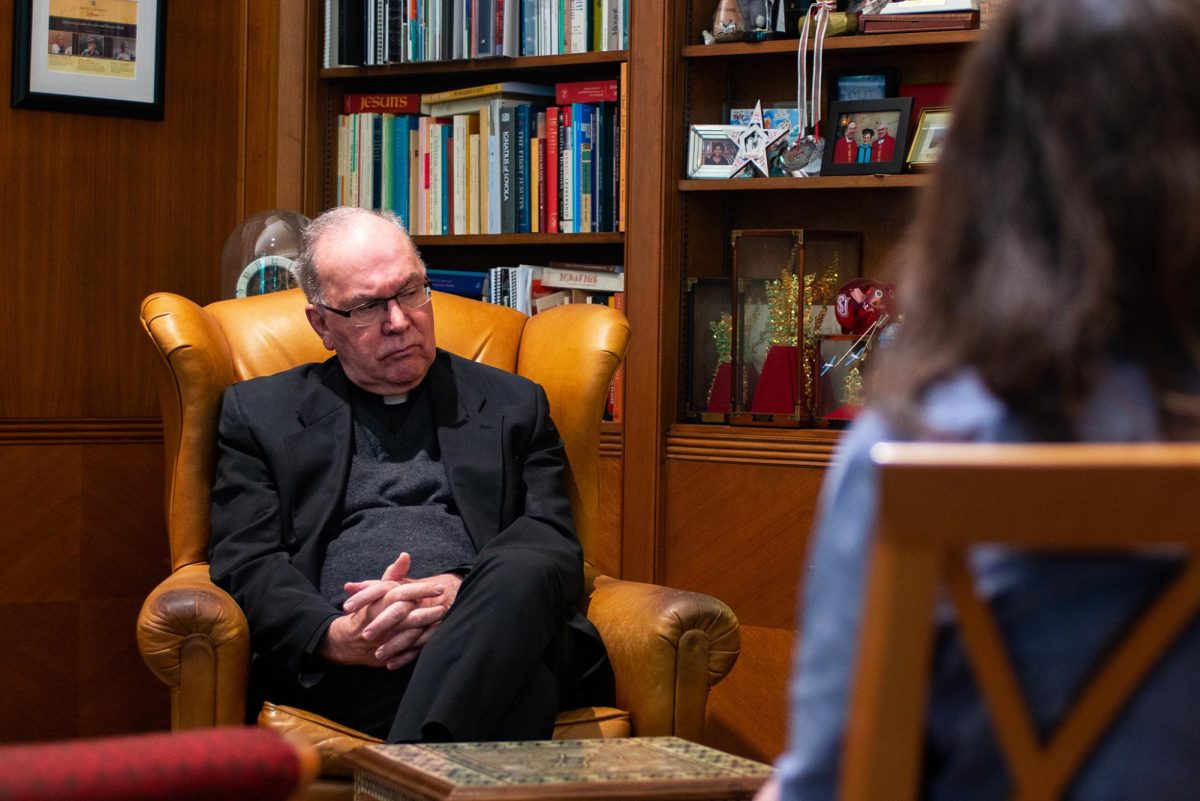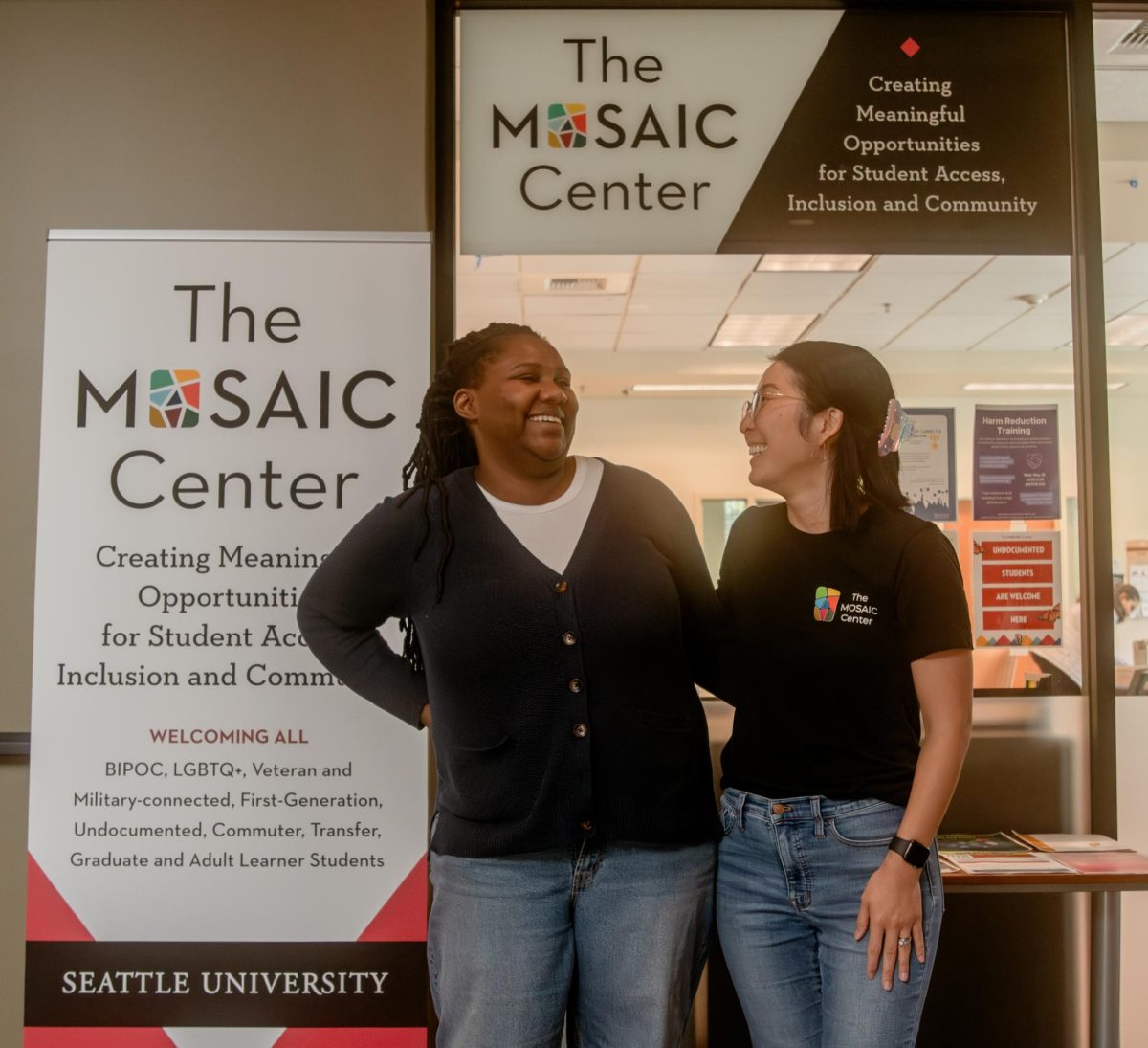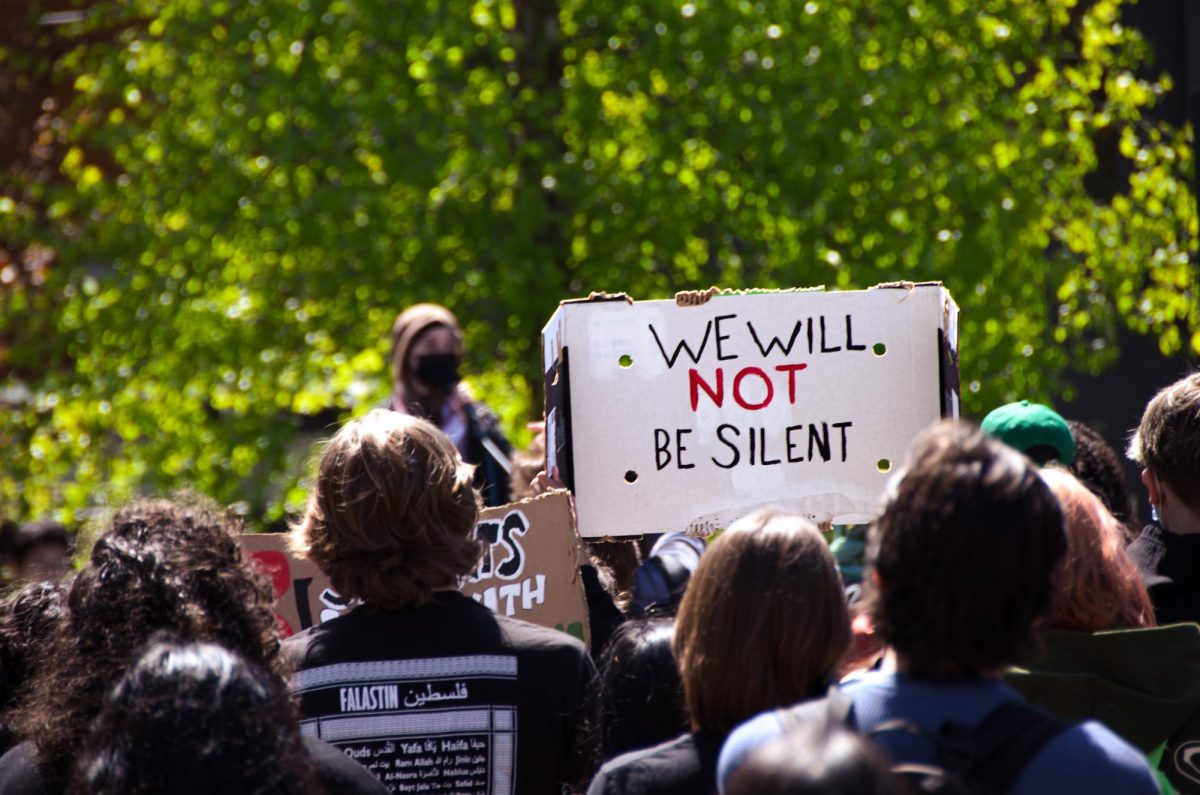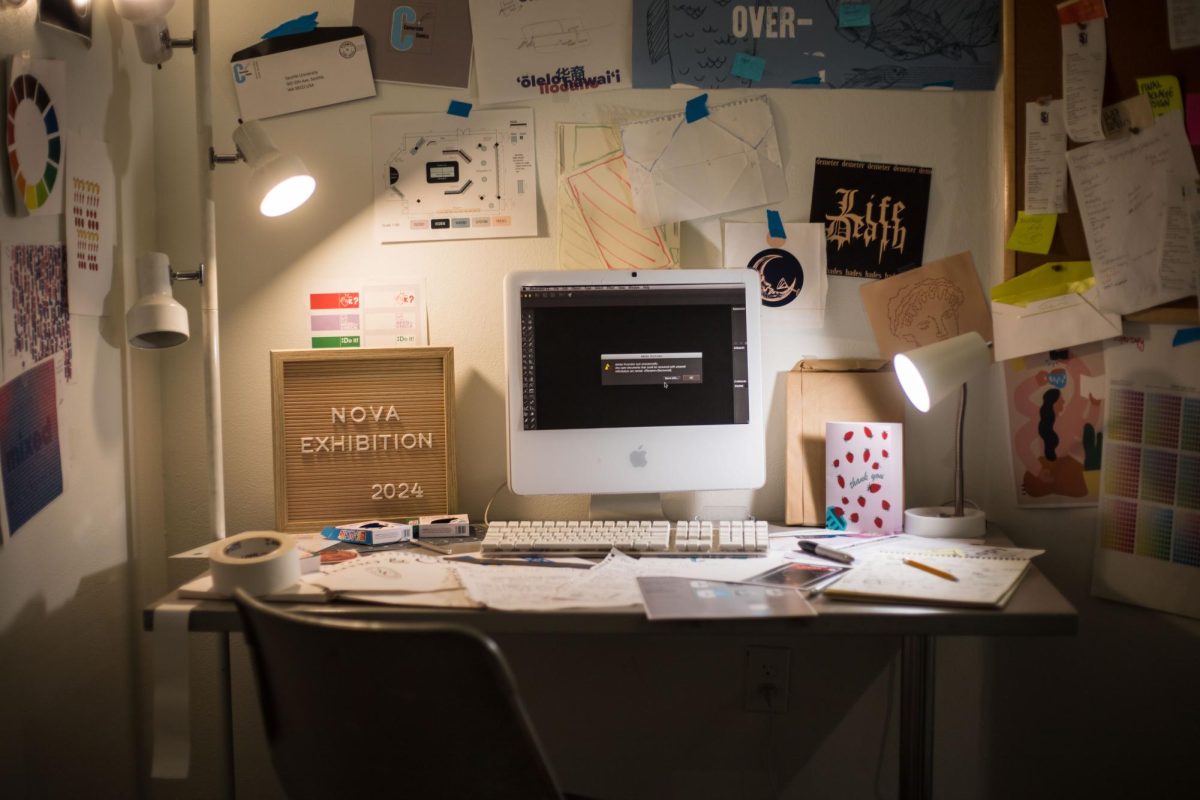While some undergraduate students work on research paper and projects solely for a grade, others have taken it a step further for their work to be recognized through publication and presentation. Seattle University has provided these opportunities to help students take it to the next level.
A group of Writing Center consultants proposed the idea that undergraduate students needed a platform where they could publish their research work. It reached various spaces on campus and caught the attention of the College of Arts and Sciences and the English department, and eventually gained support from the Provost’s Office. The English department’s brand new writing studies minor was just getting off the ground and believed it would fit in beautifully.
The first volume of Seattle University Undergraduate Research Journal (SUURJ) was published during the 2016-2017 school year and enabled students to have a platform for publishing their research work. It garnered great success and a second volume is currently in the works to be published this year.
The Seattle University Undergraduate Research Association (SUURA) conference has been a long-standing annual event at Seattle U and will be taking place on May 11 for students to present their research projects. The second volume of SUURJ will be presented at the conference. The conference is open to all and is free of charge. Multiple interdisciplinary panels, sessions and discussions will be scattered throughout various buildings on campus all day.
Student research was previously housed in what used to be the Office of Research and Sponsored Programs, but is now solely the Office of Sponsored Programs. Student research was then moved towards the Office of Fellowships, which mainly dealt with students applying for prestigious national fellowships such as the Fulbright, the Truman and the Marshall. The office shifted itself to become the Office of Fellowships and Student Research, which has its own area meant to focus specifically on student research.
Chief Faculty Advisor and Founding Faculty Editor of SUURJ Dr. Molly Clark Hillard spoke to the significance of student research having a dedicated space for its goals and how that helps bring visibility to what students are working on. She finds research to be anything and everything that students are working on.
“We’re sort of trying to expand the definition of what constitutes research on campus and to really showcase the fact that our students are doing exciting, vibrant [and] world-changing stuff on this campus,” said Hillard. “This office was imagined and constructed as a way to support those things that are already taking place.”
Hillard has been working hard all year to emphasize the collaborative and interdisciplinary nature of SUURJ as much as possible.
Student editors coming from a variety of majors are the ones looking over the submissions and polishing them for publication. They enroll themselves in sequenced classes over the course of the school year to learn about editing, publishing and technical writing among other skills needed.
Hillard wants students to be involved in research and as soon as they enter Seattle U to be connected with faculty who can guide them in their research.
“To be able to provide for students [and] say, ‘Hey, this is what research looks like for me, and here’s what it could look like for you,’ is a model for excellent teaching,” Hillard said. “It’s a way to ignite students and to expand beyond the boundaries of the classroom and the campus community into the wider world to help students enter broader conversations.”
Supporting and fostering a network of research activities on campus is essential in making that message clear. Hillard plans on doing more outreach during the summer and the fall to new students once they step foot on campus by marketing the benefits of undergraduate research in orientation programs, Welcome Week and eventually the core curriculum. Hillard also has hopes of having an actual office that students can be welcomed into.
Third-year Math major Jesse Goncalves learned about becoming an editor after having his paper on media bias in the coverage of Bernie Sanders’ presidential campaign published in the first volume of SUURJ. He was inspired to join the editorial team because of his passion for communicating research, particularly in STEM, and wanted to support other undergraduates in publishing their work as well.
Goncalves stated that the team was less concerned with polishing students’ writing, and instead considered the potential for each work to develop through the editorial process. The team sought to publish outstanding research projects that showcased a diversity in perspectives and methodologies.
“By amplifying student voices, as well as developing their communication through the editorial process, SUURJ empowers students to speak out for a just and humane world, in line with the SU mission,” Goncalves said.
English major Mackenzie Reed, another student editor, was excited to finally be able to put all the skills she had learned through the class into something bigger than her own work, collaborate with other students from multiple disciplines and share all of this in a productive manner.
“I realized last year that after I graduated I wanted to go into the publishing industry, and I thought there was no better way to really understand if this was what I wanted to do than getting my feet wet here at Seattle U,” Reed said.
Fourth-year psychology major Sufia Ahmad was among many student contributors to both SUURJ and SUURA this year. Ahmad conducted a research project in her statistics course last year that studied the role of social support in working memory. Her research was aimed towards looking at how stereotype threat affects working memory and if social support can moderate that effect.
“Our hypothesis was that ethnic minority students who might be in a stereotype threat condition thinking that what’s being questioned is their identity rather than their performance on a task would do more poorly on a memory task than white students facing that same stereotype threat,” Ahmad said.
Ahmad was inspired by her TA who submitted research to last year’s volume of SUURJ and wanted to experience the process of having her work published.
Ahmad’s results proved to be insignificant without any real findings to confirm her hypothesis, mainly because of the limitations of running a research project solely for the class. Nonetheless, she found publishing the work she had done was a big step in the practice of conducting research on her own.
“I definitely know there’s a big problem in scientific research where only positive results are published, and so I really did think that it was almost a responsibility of mine to publish my findings even though they weren’t significant, and it’s all part of the learning process,” Ahmad said.
Ahmad received feedback from student editors about improving her writing and from faculty in the psychology department about any points she might have missed. She spoke to how much she appreciated the interdisciplinary collaboration and how vital being open to feedback and facing criticism is during this process. Because of this, she has been able to approach her own disciplines and other projects in a more integral way.
“They’re not attacking me, they’re not attacking my research; they’re really just trying to understand it better,” Ahmad said. “I think that spoke to how clear you have to be in scientific writing and how aware you have to be of implicit bias and implicit understandings, [and] being really clear about your motivations for the research.”
Ahmad, who will be working as a research scientist in a learning and memory lab post-graduation, was motivated to participate in SUURA to get experience in presenting her research and values the opportunity to partake in the conference.
“I really appreciate that Seattle U does have the undergraduate research journal and conference because we aren’t a research institution like UW,” Ahmad said. “Having these small instances where students who are really interested in research, or even questioning their interest, I’ve really appreciated it a lot.”
For the first time, the portal to submit work for SUURJ’s third volume is opening at the end of May. Students interested in editing or publishing are encouraged to register for classes to become an editor for SUURJ. SUURJ offers three classes during the year—five credits in the fall, two credits in the winter and three credits in the spring. The fall class teaches students editing skills to prepare them for the winter and spring courses.
Although the deadline to participate in this year’s SUURJ and SUURA this year has passed, students are still encouraged to submit their projects for the chance to win the newfound undergraduate research prize. The prize is being conducted through the Lemieux Library and McGoldrick Learning Commons. This is the first year that the undergraduate research prize is taking place at Seattle U, but universities around the country have already implemented their own models for conducting this same initiative. Director of Public Services and Coordinator of the Learning Commons Partnership Lynn Deeken was in charge of putting together the task forces behind what the undergraduate research prize would look like.
“We looked at the variety of ways that different libraries have structured and offered their award and started to draft our own version of it,” Deeken said.
Dean of Lemieux Library and McGoldrick Learning Commons Sarah Watstein had previous experience working at other institutions and their undergraduate research prizes. Those involved in the process are open and excited to seeing how the structure may change and be revised through feedback in going forward.
“These are all landscapes that we are traversing for the first time here at Seattle U,” Watstein said. “But there’s a lot of expertzztttttience out there and articles that have been written about this and we are certainly drawing from the experience of our colleagues and other settings.”
Students who submit their work are also asked to write a reflective statement to draw out how successful they were with using different sources and strategies, and how they have used the collections and services offered.
“That’ll be interesting to see if that comes up for people that they feel like that’s made a contribution to their success as a researcher,” Deeken said. “We don’t often get to see the final product so that’s what’s kind of cool for us is getting to hopefully see the ways in which we work with students and how that results in what they’ve accomplished at the end.”
Students who win the undergraduate research prize will be able to mention how participating in the initiative truly helped them to develop professional skills that they will need in future endeavors, whether that be graduate school or the workforce of the career path they choose.
“[For students] to say that they’ve received this award, [that] they met the eligibility and evaluation criteria and their work [is being] housed and preserved here, is a really important piece,” Watstein said.
Coordinator of Information and Research Services Chris Granatino spoke to more of the interdisciplinary collaboration that this opportunity provides to students and how it has allowed for the library and learning commons to see the end products culminate into the finished piece.
“It’s been an interesting way for us in the library to start building relationships outside of our borders as a liaison to academic unit on campus,” Granatino said. “Just the act of sending information about this award and asking if anyone would be involved, [we received] some really excited responses back from the faculty already.”
Although the concept of creating a grandeur research project for publication into a research journal seems like a great feat to undergraduate students, it is absolutely possible for anyone in any field to participate. The coordinators of the undergraduate research initiative on campus want to meet students where they are at in their work and in their research and spoke to how this goes along with Seattle U’s Jesuit values and mission statements about caring for the whole person and being able to holistically provide to students.
“Cura personalis really permeates a lot of what we do in research services,” Granatino said. “I think that this reward is a nice way for us to be able to both contribute and then see the fruits of the labor [from] the students.”.
Frances can be reached at
[email protected]











